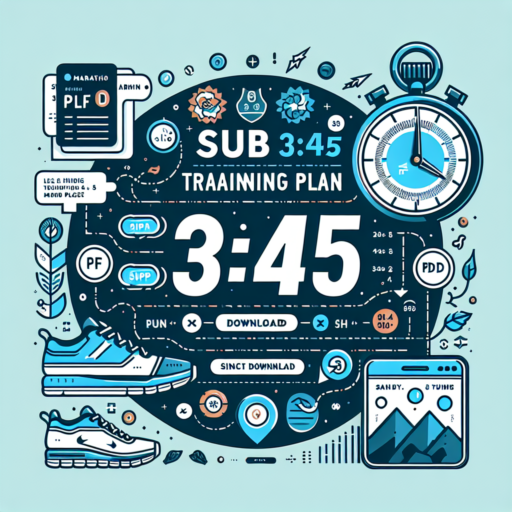No se han encontrado productos.
How many miles a week should I train for a 10 mile run?
Training for a 10-mile run is an endeavor that requires careful planning and a thoughtful approach towards mileage. The key to success lies not only in the quantity but also the quality of miles you put in each week. Typically, a runner should aim to build up to running 20 to 30 miles per week. This range provides a solid foundation, ensuring your body is conditioned and ready for the challenge of a 10-mile event. It’s crucial, however, to tailor this advice to your current fitness level and running background.
For beginners or those new to distance running, starting on the lower end of the spectrum is wise. Initiating your training with shorter distances and gradually increasing your weekly mileage helps prevent injuries and promotes long-term success. Incorporate a long run into your weekly schedule that accounts for roughly 30-40% of your total weekly mileage. This strategy not only builds endurance but also boosts your confidence in covering longer distances.
On the flip side, experienced runners might find themselves comfortably beginning at a higher mileage, potentially exceeding the 30-mile per week benchmark. For these athletes, focus shifts towards enhancing performance and honing in on race pace. Adding speed work and tempo runs can further prepare your body for the specific demands of a 10-mile run. Always remember, regardless of your starting point, increasing mileage should be done gradually—no more than a 10% increase per week to mitigate the risk of injury.
How to build up to a 10 mile run?
Training for a 10 mile run requires a gradual increase in distance to prevent injury and build endurance effectively. It’s not just about running longer distances; it’s about doing it smartly. Below are essential steps to consider in your training regimen.
Start With a Solid Base
Before aiming for the 10 mile mark, ensure that you have a solid running base. This means you should be comfortable running at least 3-5 miles a few times a week. If you’re not there yet, focus on achieving this milestone first by incorporating short, consistent runs into your weekly routine.
Increase Your Mileage Gradually
Increase your longest run by no more than 10% each week. This slow progression helps your body adjust to the increased demand, reducing the risk of injury. Alongside extending your longest run, maintain a few shorter runs during the week to keep accumulating mileage without overstraining.
Integrate Strength and Flexibility Training
Strength training exercises for runners can enhance your core and leg strength, which are crucial for long-distance running. Incorporating flexibility training through dynamic stretches or yoga can also aid in injury prevention and recovery, making your build-up to a 10 mile run smoother and more effective.
How to train for army 10 miler?
Training for the Army 10-miler requires a dedicated mix of strength, endurance, and strategy. Whether you’re an experienced runner or new to long-distance races, crafting a balanced training regimen is key. The foundation of your preparation should involve building up your mileage gradually to prevent injuries and ensure you’re at your peak on race day.
Creating a Training Schedule
Start by establishing a consistent running routine, increasing your total weekly mileage by no more than 10% each week. Incorporate long runs into your schedule, extending them slowly to get your body accustomed to the distance. Long runs are critical as they improve your aerobic capacity, essential for the 10-mile challenge. Additionally, mix in speed work and interval training to enhance your pace and resilience, crucial elements for handling the varied demands of the course.
Conditioning and Strength Training
Besides logging miles, incorporating strength training into your routine is indispensable. Focus on lower body strength to boost your running efficiency and upper body workouts to maintain a strong posture throughout the race. Core exercises are equally vital, as a strong core improves stability and running mechanics, diminishing the risk of injuries. Aim for two to three strength training sessions per week, focusing on compound movements that engage multiple muscle groups simultaneously.
How do you train for a 15km run?
Training for a 15km run is a rewarding challenge that requires dedication, strategy, and proper preparation. The key to success lies in progressive training, which gradually increases your endurance and speed. A good starting point is to assess your current fitness level and set realistic training goals. From there, you can tailor a training plan that best suits your needs and abilities.
Creating a Training Schedule
Developing a structured training schedule is crucial for steadily increasing your running distance. Allocate specific days for long runs, speed work, and rest or cross-training. Ensure each week includes a long run that progressively gets longer, simulating the 15km distance to build endurance. Incorporating interval training or tempo runs can also significantly improve your speed and stamina.
Incorporating Rest and Recovery
Equally important to running and exercise is the rest and recovery phase. Giving your body adequate time to recover prevents injuries and allows your muscles to heal and strengthen. Include at least one or two rest days in your weekly schedule, and consider practices like yoga or swimming on lighter days to maintain flexibility and aerobic fitness without overstressing your body.




